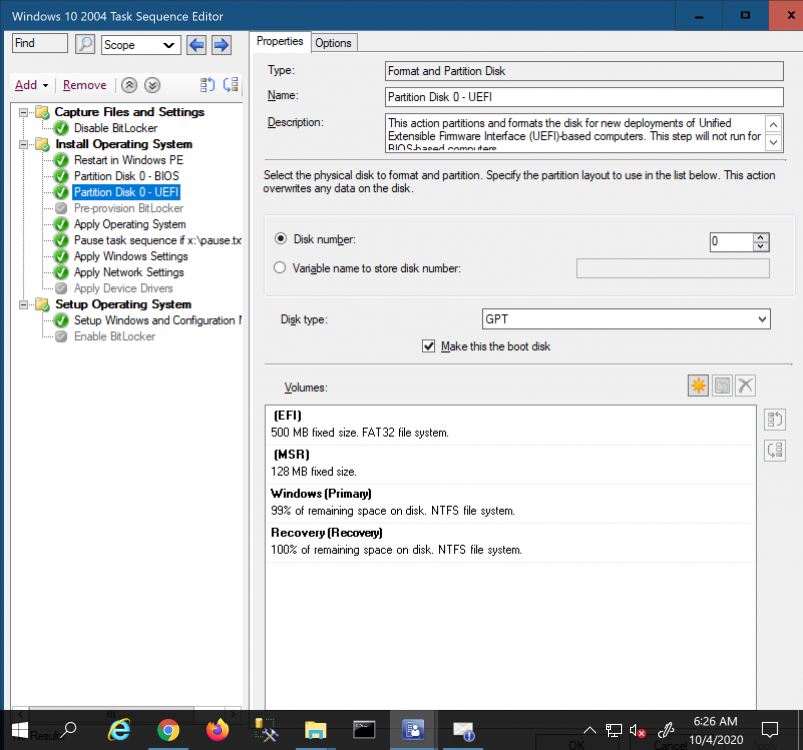-
Posts
9247 -
Joined
-
Last visited
-
Days Won
369
Everything posted by anyweb
-

MBAM portals cannot access
anyweb replied to hannah's topic in System Center Configuration Manager (Current Branch)
have you seen my guide here- 23 replies
-
have you tried to reinstall the helpdesk webportal as it's more than likely still tied to your original SQL server setup, here's the command line I used in my labs .\MBAMWebSiteInstaller.ps1 -SqlServerName cm01.windowsnoob.lab.local -SqlInstanceName MSSQLSERVER -SqlDatabaseName CM_P01 -ReportWebServiceUrl http://cm01.windowsnoob.lab.local/Reportserver -HelpdeskUsersGroupName "windowsnoob\MBAM_HD" -HelpdeskAdminsGroupName "windowsnoob\MBAM_HD_Adv" -MbamReportUsersGroupName "windowsnoob\MBAM_HD_Report" -SiteInstall Both that would be the first thing i'd do, uninstall your current help desk (as you've moved SQL) and then reinstall the helpdesk portal pointing to the new SQL server
-
Interesting, I haven't tested it yet with a CMG scenario, but now that you've mentioned it I guess I should so i'll try and replicate this in my lab and see what happens, time willing, i'll report back after that cheers niall
- 242 replies
-
- 1702
- forced upgrade
-
(and 2 more)
Tagged with:
-

Altaro FREE ebook - SysAdmin Horror Stories Vol.2
anyweb posted a topic in Official Forum Supporters
Last year’s ebook, SysAdmin Horror Stories Vol1 by Altaro, highlighted some of SysAdmins’ funniest and most horrifying stories. It proved so successful, that Altaro decided to produce a second edition this year: they’ve gathered some more real-life stories to share with you, that are both funny and horrific! We all know that a SysAdmin’s job is no easy task, and apart from constantly having systems to update, bugs to fix and users to please, SysAdmins encounter all sorts of situations throughout their careers. From tech situations to funny anecdotes, terrible mishaps or incidents with colleagues, this eBook includes real stories of what SysAdmins go through on a daily basis. It’s very easy to download as no registration is required. Click on Download and it’s yours. It includes more than 20 short stories but this one is my personal favorite. Download your FREE copy today & Happy Halloween! -

Dont Have Application Website Catalog
anyweb replied to honestvip's topic in Configuration Manager 2012
they are not there because they have been removed, see https://docs.microsoft.com/en-us/mem/configmgr/core/plan-design/changes/deprecated/removed-and-deprecated-cmfeatures- 1 reply
-
- 1
-

-

ADR not downloading updates
anyweb replied to kesh's topic in System Center Configuration Manager (Current Branch)
which version of configmgr ? -
what type of headphones are they and are you using bluetooth or wired to use them ?
-
hi Mike used space only in a task sequence occurs when you have enabled the Pre-Provision BitLocker step and have not configured it (or the enable bitlocker step) to use Full disk encryption I blogged about that in the following posts, please take a look: How can we utilize the Bitlocker Management feature during OSD with Endpoint Manager Full disk encryption (in ConfigMgr 1910) – a closer look using real hardware Enabling Full Disk Encryption in Microsoft Endpoint Configuration Manager 1910 in a task sequence if none of this helps then let me know and i'll investigate in my lab
-

Autologon.exe task sequence SCCM2012r2
anyweb replied to Xavier62's topic in Configuration Manager 2012
hi and welcome, first i'd recommend you use the Current Branch release of ConfiMgr, today that would be anything from version 2006 and later (you install the baseline version first CM2002) then upgrade. next, your error 0x8007052e translates to " The user name or password is incorrect. Source: Windows ----- so you should verify you are settings the username/password correctly cheers niall " -
@lalajee yup, that's why I had a Note: in step 5, shown again below ? Note: This is an MDT integrated task sequence so if you want to use it please integrate MDT with ConfigMgr. You will get messages about missing content during the import, choose 'ignore dependancies' and it will import the task sequence steps anyway. However, you must then step through each step in the task sequence that references a package, and point it to the equivalent package on your ConfigMgr environment.
-
anything is possible you just need to think and then come up with a solution. this solution will detect the installed language pack, and you could use that detection method and expand it to work in your environment https://www.niallbrady.com/2016/05/17/introducing-the-windows-10-uefi-bitlocker-frontend-for-system-center-configuration-manager-current-branch
-
I'm not infront of my computer but this can be inverted so that you can get or set $OSDComputerName $tsenv = New-Object -COMObject Microsoft.SMS.TSEnvironment $tsenv.Value("OSDComputerName") = $OSDComputerName I'll fire up my lab and show some examples shortly... $tsenv = New-Object -COMObject Microsoft.SMS.TSEnvironment $OSDComputerName = $tsenv.Value("OSDComputerName")
-

Trouble deploying Windows 8 using UEFI to HP Laptop
anyweb replied to DavidK's topic in Configuration Manager 2012
ok well then perhaps it would have been better to create a separate thread for this, seeing as it's got nothing to do with deploying Windows 8 to a HP computer... anyway, you are testing a very default scenario, i'll compare my log to yours... does your partition step look like this ? if not, show me a screenshot of your settings. in the Windows partition, have you verified that it does a Quick format ? secondly, your vm has an A:\ drive, have you tried without that ?








